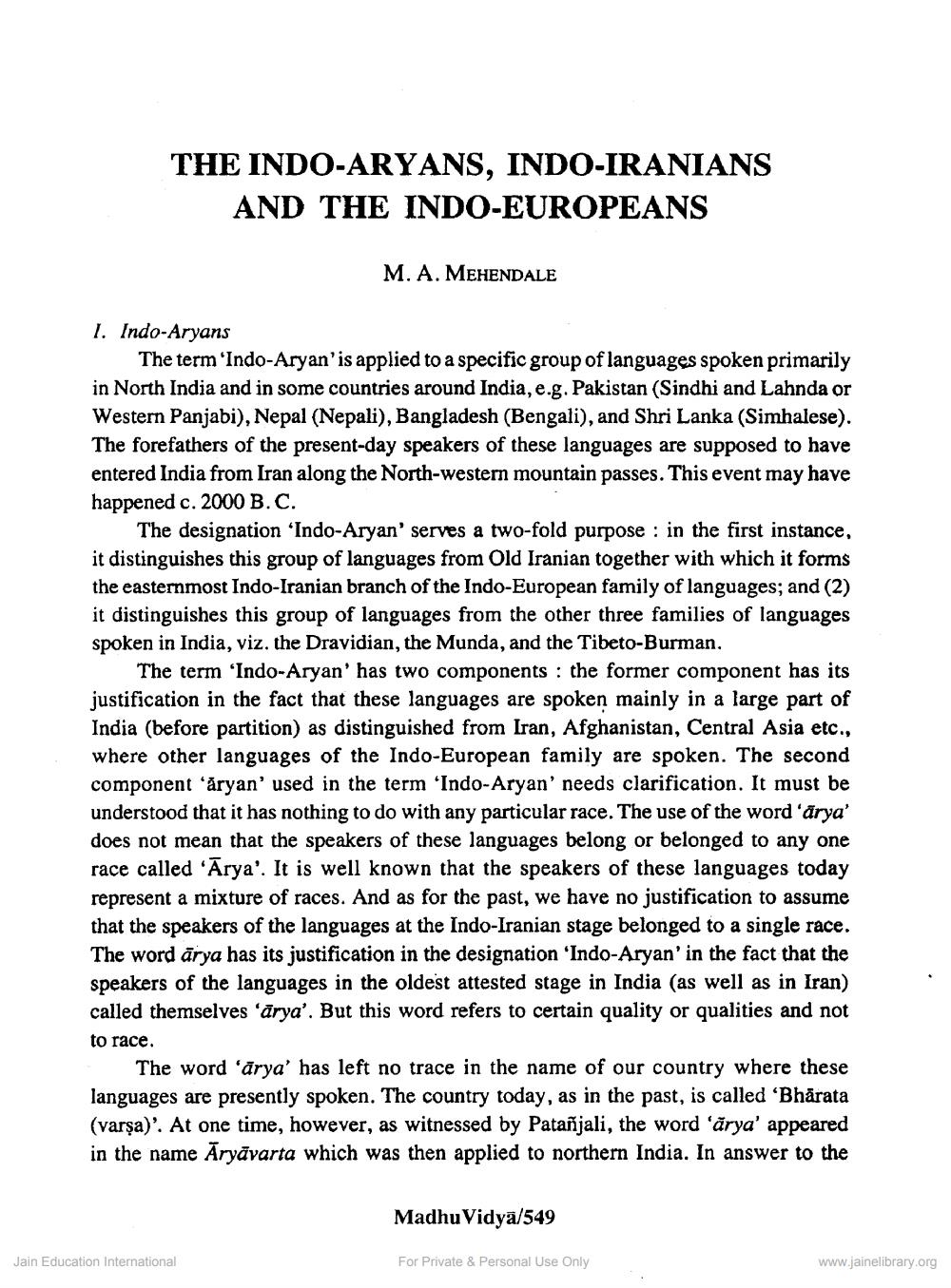________________
THE INDO-ARYANS, INDO-IRANIANS
AND THE INDO-EUROPEANS
M. A. MEHENDALE
1. Indo-Aryans
The term 'Indo-Aryan' is applied to a specific group of languages spoken primarily in North India and in some countries around India, e.g. Pakistan (Sindhi and Lahnda or Western Panjabi), Nepal (Nepali), Bangladesh (Bengali), and Shri Lanka (Simhalese). The forefathers of the present-day speakers of these languages are supposed to have entered India from Iran along the North-western mountain passes. This event may have happened c. 2000 B. C.
The designation 'Indo-Aryan' serves a two-fold purpose in the first instance, it distinguishes this group of languages from Old Iranian together with which it forms the easternmost Indo-Iranian branch of the Indo-European family of languages; and (2) it distinguishes this group of languages from the other three families of languages spoken in India, viz. the Dravidian, the Munda, and the Tibeto-Burman.
The term 'Indo-Aryan' has two components: the former component has its justification in the fact that these languages are spoken mainly in a large part of India (before partition) as distinguished from Iran, Afghanistan, Central Asia etc... where other languages of the Indo-European family are spoken. The second component aryan' used in the term 'Indo-Aryan' needs clarification. It must be understood that it has nothing to do with any particular race. The use of the word 'drya' does not mean that the speakers of these languages belong or belonged to any one race called 'Arya'. It is well known that the speakers of these languages today represent a mixture of races. And as for the past, we have no justification to assume that the speakers of the languages at the Indo-Iranian stage belonged to a single race. The word drya has its justification in the designation 'Indo-Aryan' in the fact that the speakers of the languages in the oldest attested stage in India (as well as in Iran) called themselves 'drya'. But this word refers to certain quality or qualities and not
to race.
The word 'drya' has left no trace in the name of our country where these languages are presently spoken. The country today, as in the past, is called 'Bharata (varsa)'. At one time, however, as witnessed by Patanjali, the word 'ärya' appeared in the name Aryavarta which was then applied to northern India. In answer to the
Jain Education International
Madhu Vidya/549
For Private & Personal Use Only
www.jainelibrary.org




